Art educator and writer Stephanie Cubbin reflects on the changes and challenges following the return to the Art classroom, and the way that current events and world issues have affected students’ developing artistic practice.
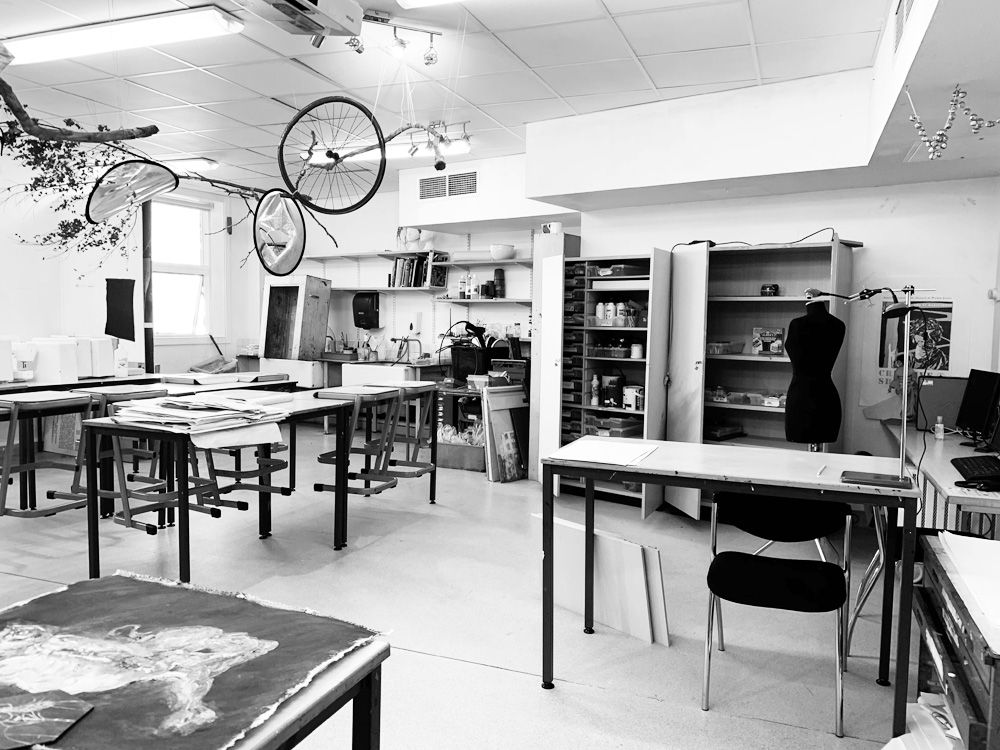
Now we are back – what does it feel like for you?
We’ve done a lot to welcome back our classes – now each student in every Key Stage has an art folder, with a set of watercolours, two brushes, a 4B drawing pencil, an art sketchbook and more. Teachers are distanced at the front, in what I like to call our own studio space. We are planning blended learning, which means, in reality, we are making lots of practical responses in the classroom, and then students log into Google Classroom to complete their online portfolio for homework. We are taking lots of photos of their work and uploading on to drives for them to access.
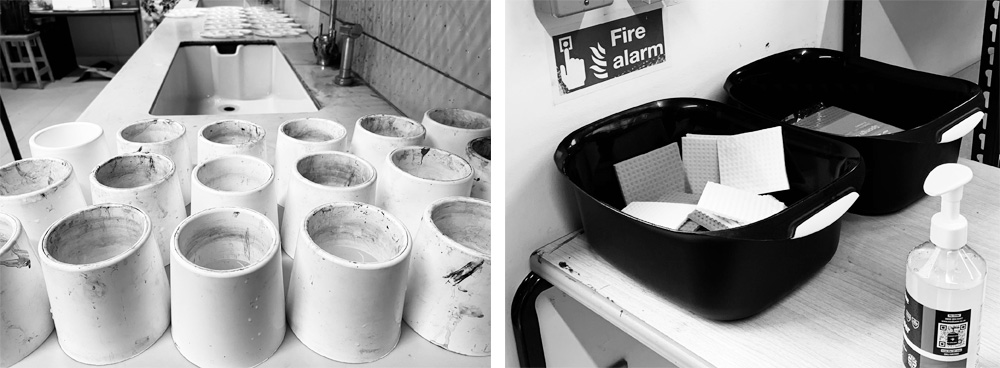
Although it seems very turbulent at the moment, we at least have the chance to prepare our students for working at home this time. I want to use every little bit of classroom time to make and draw together, concentrating on practices that we think are most important. Over the last term, the students working at home generally became less risk-taking, reverted to styles that were tight, and focused on attempting photographic realism, losing expressiveness, and the gestural mark-making that they had developed in school. A braveness that comes from seeing their peers trying and succeeding in their experimentation was a little lost.
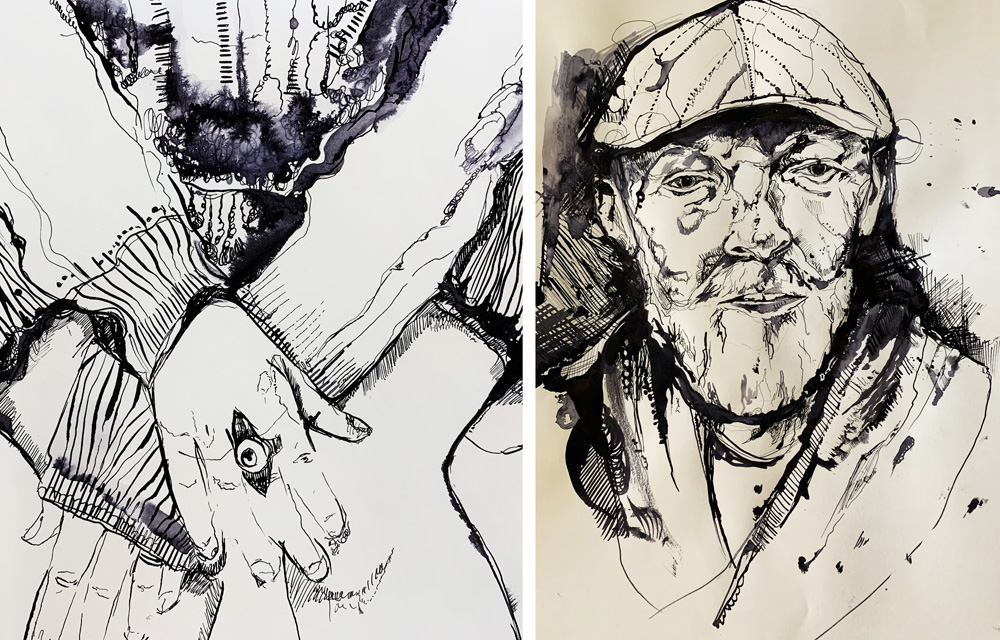
So now that we are back together, we are focussing on being expressive, loose and free with our drawing styles. We are using ink pens to take a line for a walk, to allow the line to take its own direction, using broken lines, twisting the line, taking the line through areas of water on the surface, so the line will move without control. Moments where the ink dripped added to the sense of movement. We worked intuitively and without drawing what we see. We looked at how painters like Jessie Makinson draw shapes randomly on canvases, and then build a narrative from these shapes. We painted what we could hear, by listening to some music, laying down abstract marks. We drew with scissors, to learn that allowing the freedom of not copying really does help our relationship with the materials. We explored, and played with materials learning how they could be manipulated.

We discussed the limitations that we have that affect our students’ ability to make exciting artwork, from a large working space to time. Then with the students, students planned how we can build strategies to circumvent those barriers. One strategy is to used looseness and mark-making in the background, and add one or two areas of detail. This way, one can start a painting or drawing, and build the detail until the time is complete, the piece just grows.. and at whatever point you stop, it looks like it was always meant to be.
There are some inspirational artists that use loose sketches and detailed painting together. There are many artists that have unfinished qualities, that students can be directed to. It lowers the anxiety and allows the space for good quality.
There are some inspirational artists that use loose sketches and detailed painting together. There are many artists that have unfinished qualities, that students can be directed to. It lowers the anxiety and allows the space for good quality.
More importantly, we have been thinking about the curriculum we teach and if it encourages our young people to reflect on the world that they are part of. I am inspired by the list of projects that my Y11 have chosen… from COVID and pandemics, climate change and meat production, #BlackLivesMatter, lost property and the narrative that comes with found objects, weather, the migrant crisis, sorrow and religion… None of these are easy topics, and all require an intellectual approach to research and making, students are looking in newspapers, art galleries and more importantly artists that are engaged in socially engaged practice.
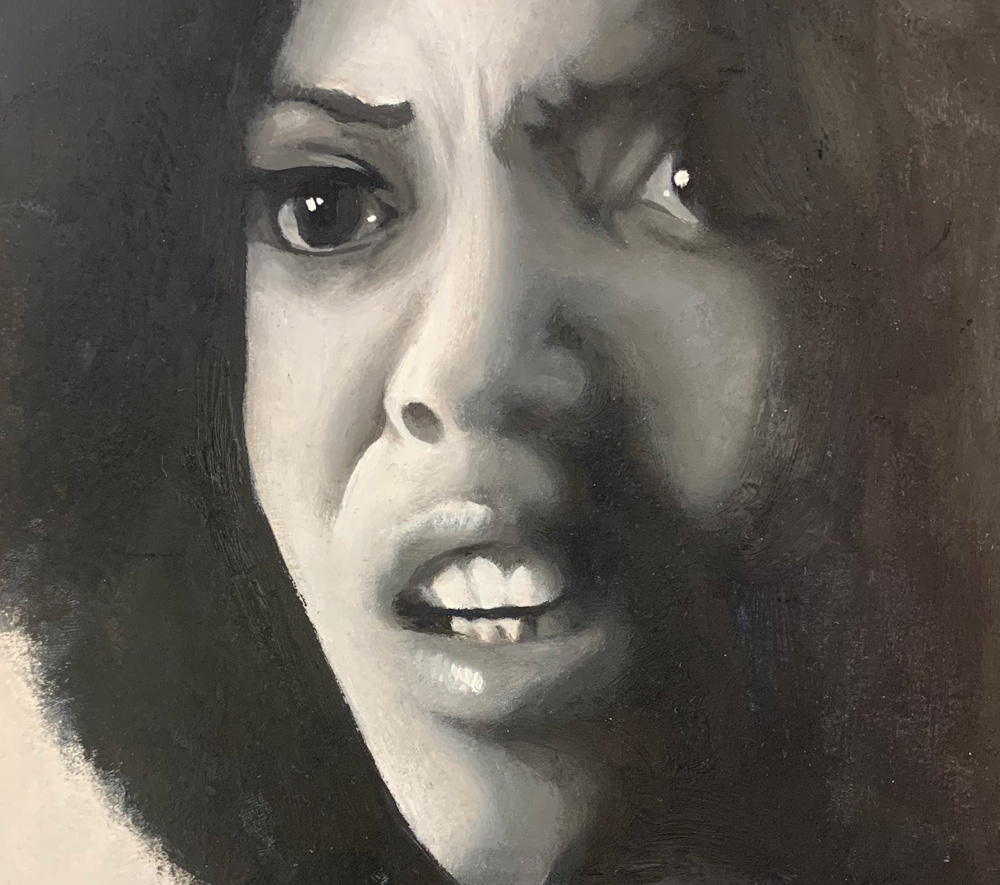
This reflects a general turn in the mainstream art world towards projects that explicitly support social practice and social justice. If we look at Turner Prize nominees such as the group Forensic Architecture, who use visual methods to mount cases with groups like Amnesty International, or the prominence of artists like Theaster Gates, who builds social housing in Chicago, or Tania Bruguera, who named a gallery in Tate Modern after a local community organiser, as well as in the significant increase in young people’s participation in social struggles like the climate strike and #BlackLivesMatter, we can see a strong interest in socially and ecologically oriented art taking hold. This does not replace a focus on material practice, as we are encouraging on both aspects of their art education but poses questions about how we might better orient art teaching and art students towards the world students will inherit.
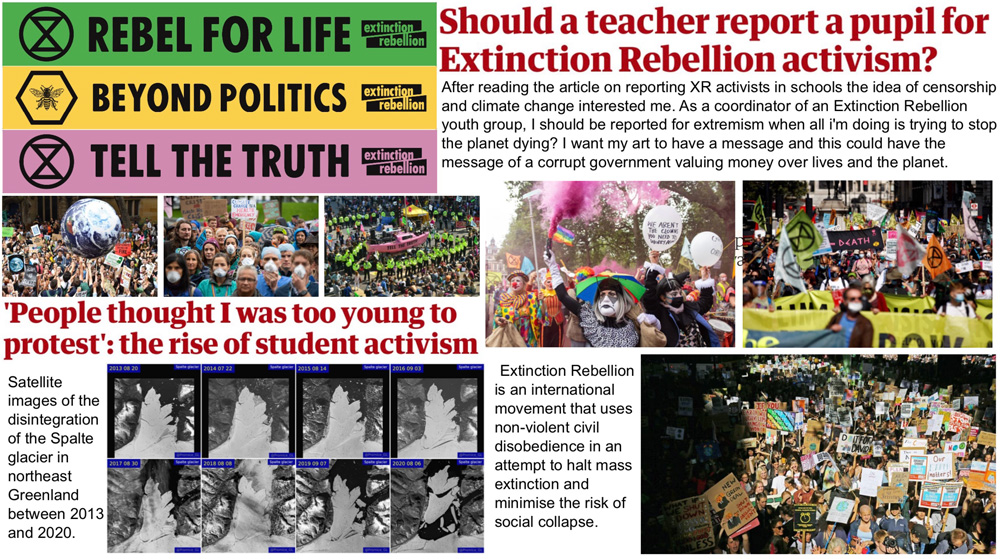
This is a sample of a resource created by UK Charity AccessArt. We have over 1500 resources to help develop and inspire your creative thinking, practice and teaching.
AccessArt welcomes artists, educators, teachers and parents both in the UK and overseas.
We believe everyone has the right to be creative and by working together and sharing ideas we can enable everyone to reach their creative potential.





